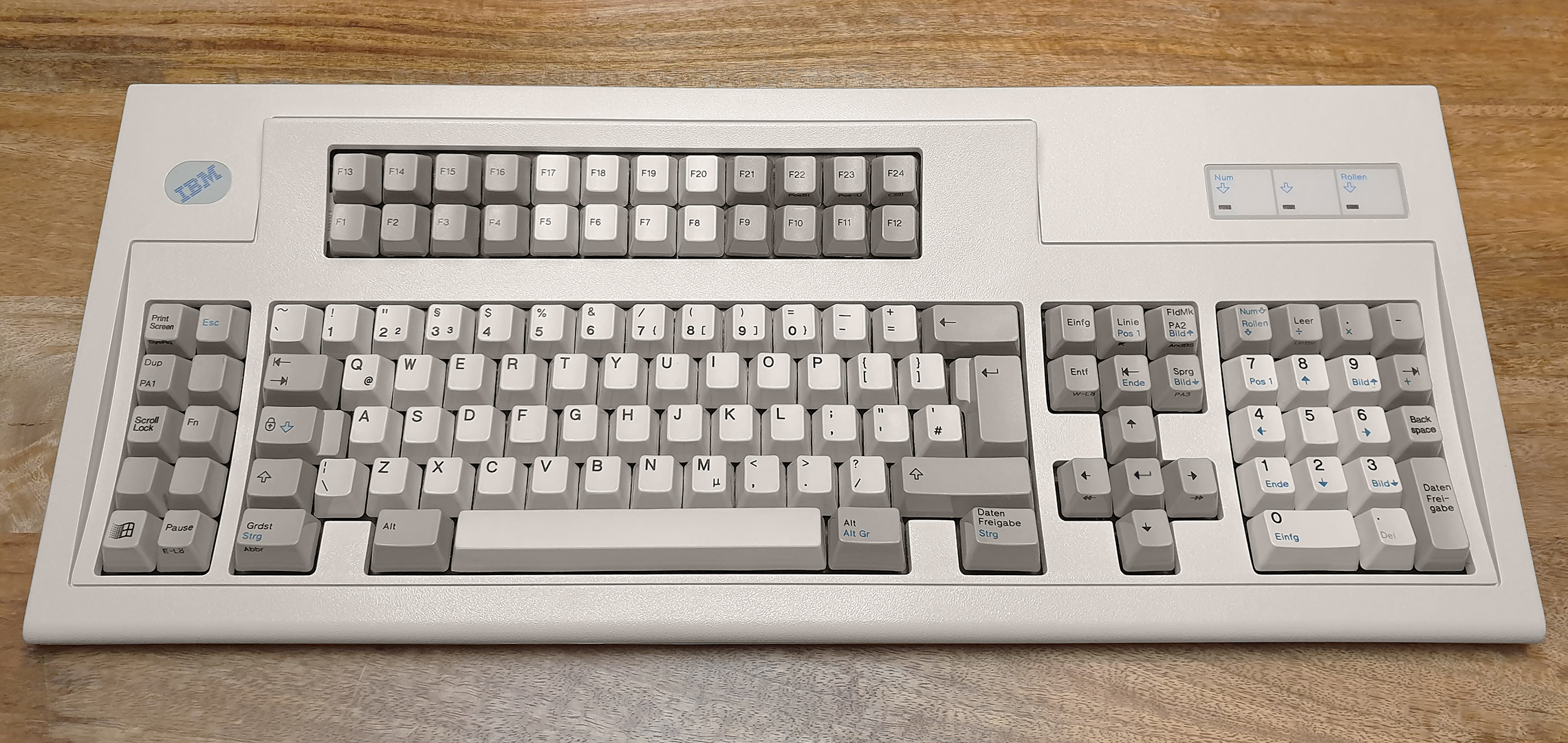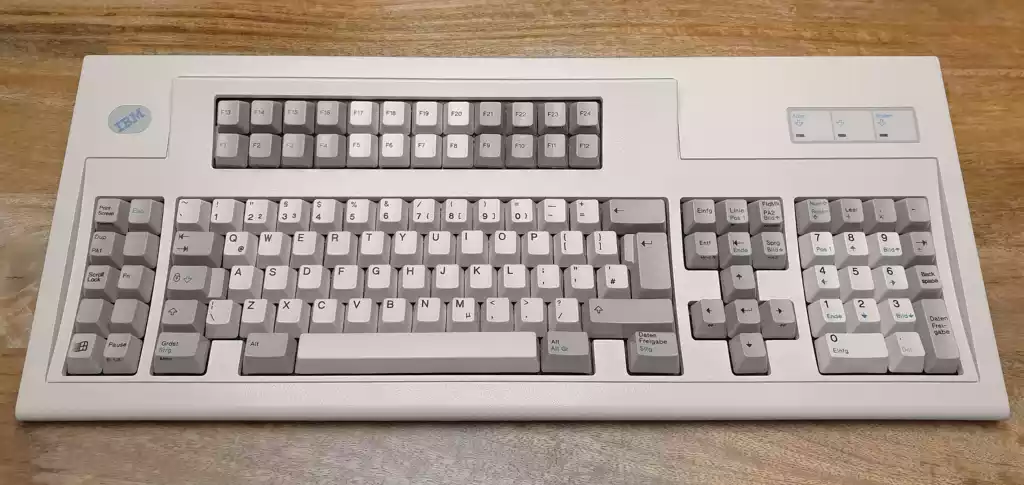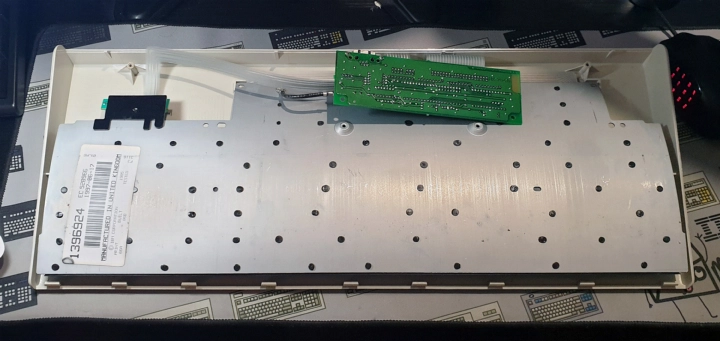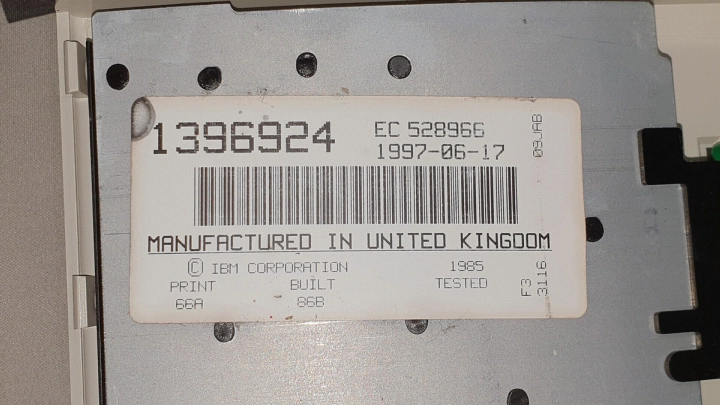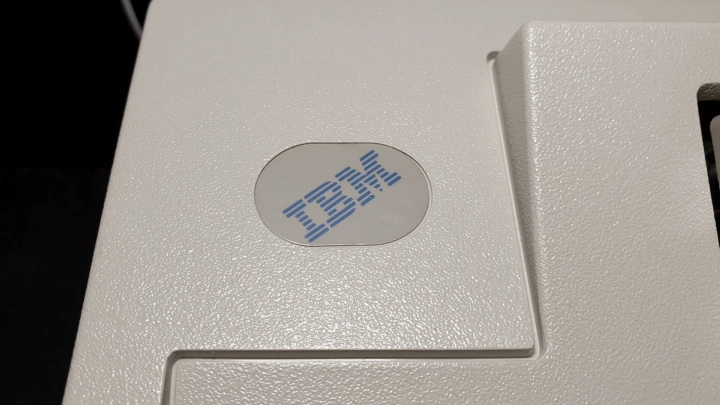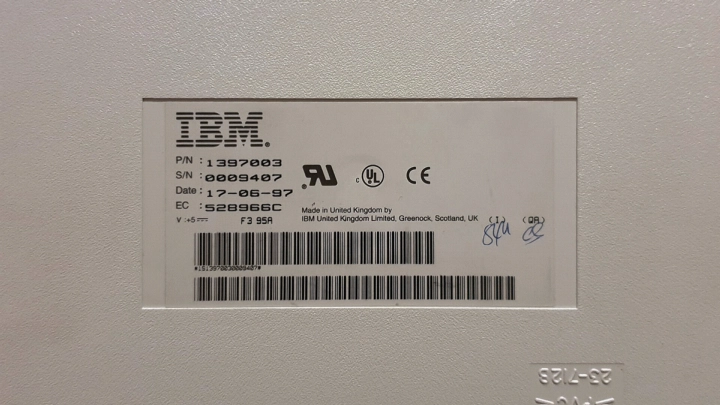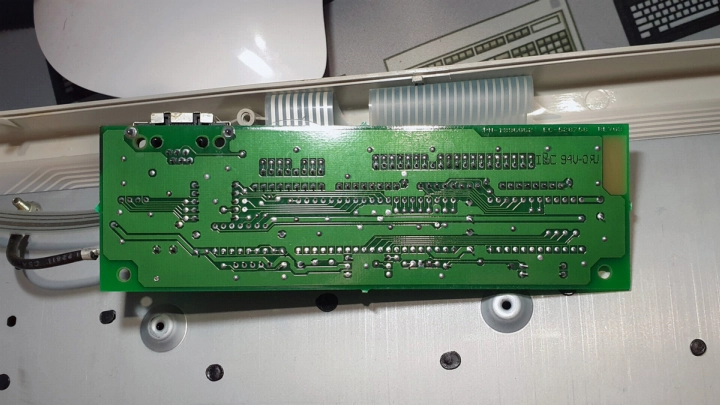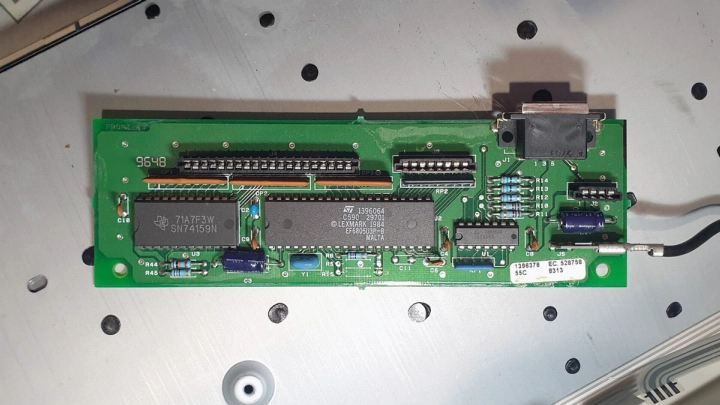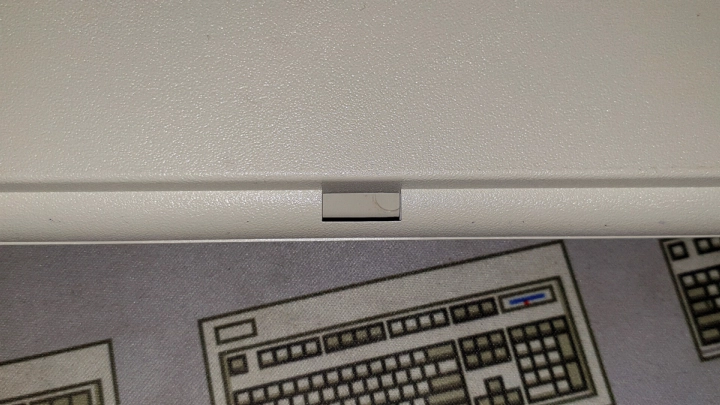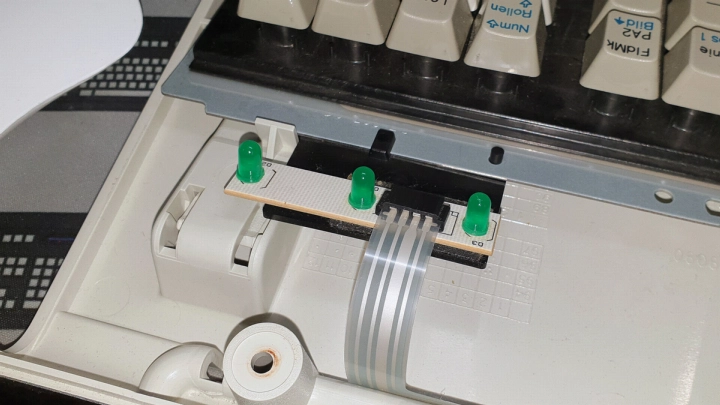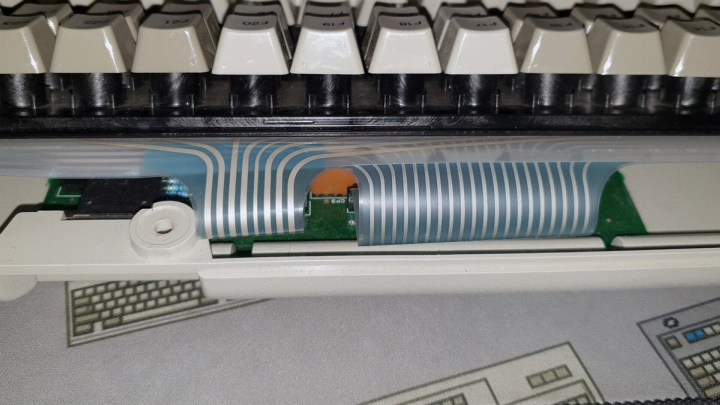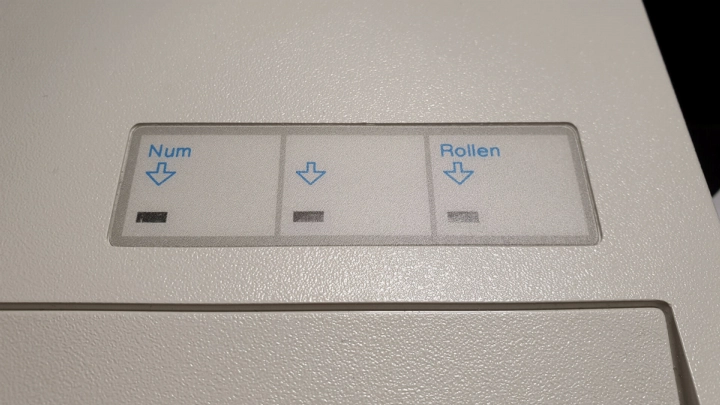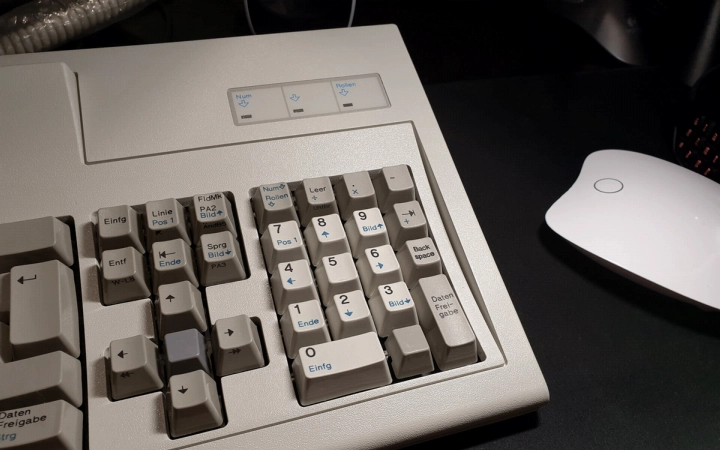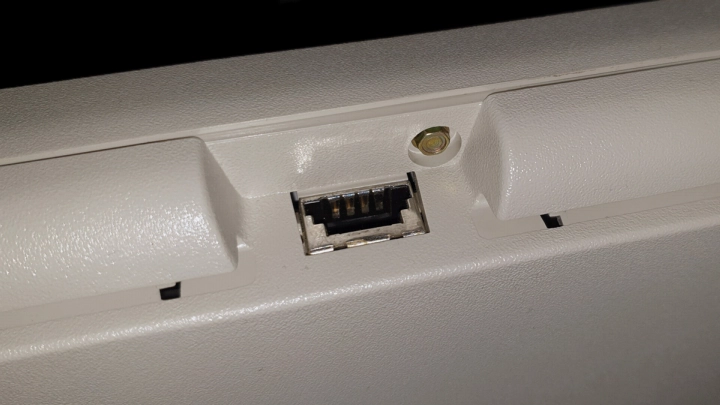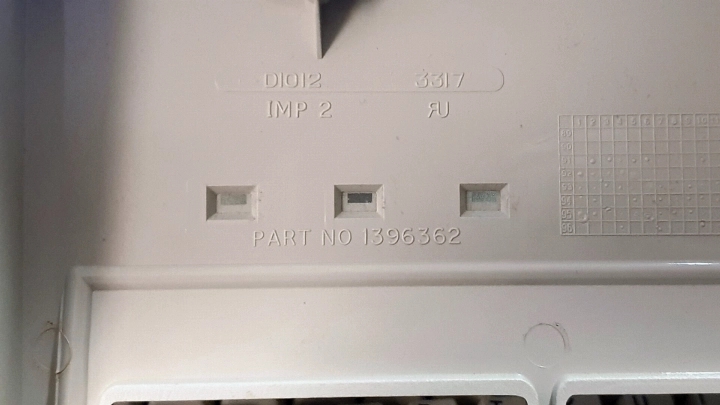SNKB-M1997-BT4-122
Notes
This keyboard was featured in my Differences between and classifications of 122-key Model Ms comparison topic.
| Full name | IBM Personal System/2 Host Connected Keyboard |
|---|---|
| Part number | 1397003 |
| Type | Model M Type IV 122-key Host Connected Converged Keyboard |
| Nickname | Battlecruiser |
| Keyswitches | IBM membrane buckling springs |
| Feet | Single-setting elongated flip-out feet |
| Date of production | 1997-06-17 |
| Date of acquisition | 2021-02-24 |
